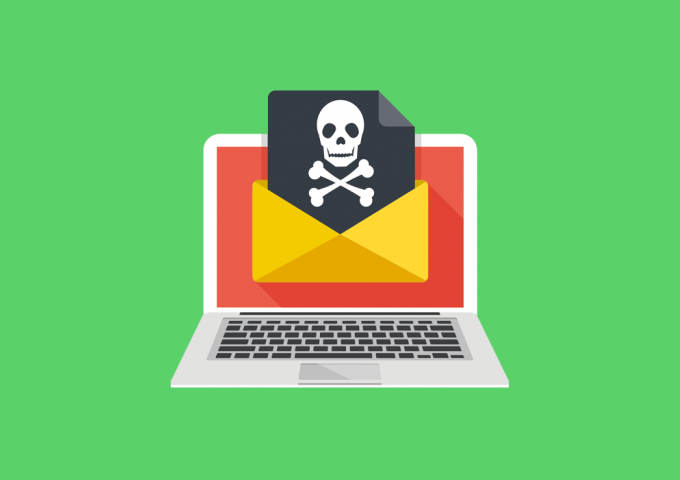6 tips to recognize spam emails


The internet has a dark side unfortunately, with virtual pickpockets and burglars. A well-known way to mislead you is via email. A seemingly innocent message may contain a virus or Trojan horse, it may rob you of confidential data or make all your files unusable. MyOnlineStore has a very powerful spam filter, but some spam messages may still end up in your mailbox, so beware! In this blog you’ll discover how to recognize spam emails and protect yourself against online evil!
1. Consider whether or not you were expecting this email
Let’s start off with a simple question: Were you expecting this email? A telephony provider sending you an invoice for your phone subscription via email is to be expected. But what about an invoice from a company you haven’t dealt with at all? Even if the business in question looks professional, if you’re not dealing with them they don’t need your details and you shouldn’t pay for anything.
2. Check the sender’s email address
The annoying thing about fake emails is that they often seem legit. They may look like they were sent by banks, companies or organizations that you deem reliable. In reality, their identity was ‘taken over’ by a fake party hoping to trick you. They use the same name, logo and house style in the email, hoping you’ll fall into the trap. But what about the actual email address?
Spammers use an odd email address or one that is a variant of the original name. So when you see a weird email address you’re probably the victim of phishing.
3. Links or attachments? Don’t click on them!
Not sure whether an email is from a reliable source? Then never click on the links or attachments. If you do, you run the risk of malicious software being installed on your computer or a CryptoLocker (scroll down for more info) intruding and locking your computer files.
Links
You can check whether a link in your email is reliable by holding your pointer on it without clicking. The URL will then be displayed and you can check whether it’s a known and reliable or an unknown address.
Attachments
Does the email include an attachment? Then beware! Zip files, which contain a pdf file with a virus, are very popular among fraudsters, because virus scanners don’t easily identify dangerous zip files. Also be careful if you receive any of the following extensions:
- Executable files: EXE, COM, BAT, PIF
- Documents that may contain code: PDF, DOC(X)M, XLS(X)M, PPT(X)M
- Executable system files: DLL, CPL, MSC, CMD
- Installation programs and archives: MSI, ZIP, CAB, RAR
- Screensavers: SCR (these are also programs!)
- Double extensions: e.g. ARCHIVE.DOC.EXE
Cryptoware (also known as CryptoLocker) can result in all your computer files, including back-ups, being locked. In order to regain access to your files, you’re asked to pay a ransom in the digital currency Bitcoin.
Are you the victim of Cryptoware? Then try to retrieve your files, not by paying the ransom but by having a look at the Kaspersky website. This company develops virus scanners, like Norton (Symantec) and McAfee.
https://noransom.kaspersky.com (This link is safe. Promise!)
4. Check the language and design
If an email is riddled with linguistic and spelling errors, incorrect syntax or weird terminology, chances are you’re dealing with spam. Hackers often operate from abroad. They use machine translation engines, which often results in incorrect language usage. The design of the email may look odd too (for example weird images and/or low-resolution logos).
Important remark! The language and design in fake emails are getting better and better, so also bear in mind the other tips, even if the email looks good and professional.
5. Careful when asked for your personal details
Have you just received a request to update your personal details? Be careful, because banks, insurance companies and government agencies will never ask you for your personal details by email.
Not sure whether you’re dealing with a legit sender? Contact the company in question to check whether they really need your personal details. Needless to say, you should find the company’s contact details online instead of using the ones listed in the email.
6. Alarming tone of voice? Watch out!
In their emails, fraudsters generally use an alarming tone of voice. An example? An email stating an ‘invoice’ must be paid asap. If you receive one of these, don’t stress. Fraudsters hope that your anxiety will push you to pay up quickly or disclose confidential details, allowing them to blackmail you.
Does the email convey a sense of urgency? Then check out our other tips to verify whether it’s likely from a reliable source.
How to deal with spam
If you’ve checked your email message based on our tips above and you’re pretty sure it’s spam, what’s next? If you often receive spam with the same subject or from the same sender, you can mark either the subject or the sender as spam. When using Webmail, move the email to the JUNK folder. The next time you receive a similar message it will automatically end up in the trash because the email server will learn to distinguish genuine emails from spam messages.
A few absolute don’ts:
- Never click on ‘Unsubscribe to these emails’, because this link can contain a virus.
- Never reply to unsolicited messages. If you do, the spammers will know you’ve read the email (and that your email address is active), and they will try to trick you once again using the same channel.
Of course we hope you don’t receive any spam at all, but if an email looks suspicious bear in mind the tips above. They will help you find out whether you’re dealing with a reliable or a fishy organization, and they’ll protect you from fraudsters!
Do you have any other tips to recognize spam? Share them in the comments!
